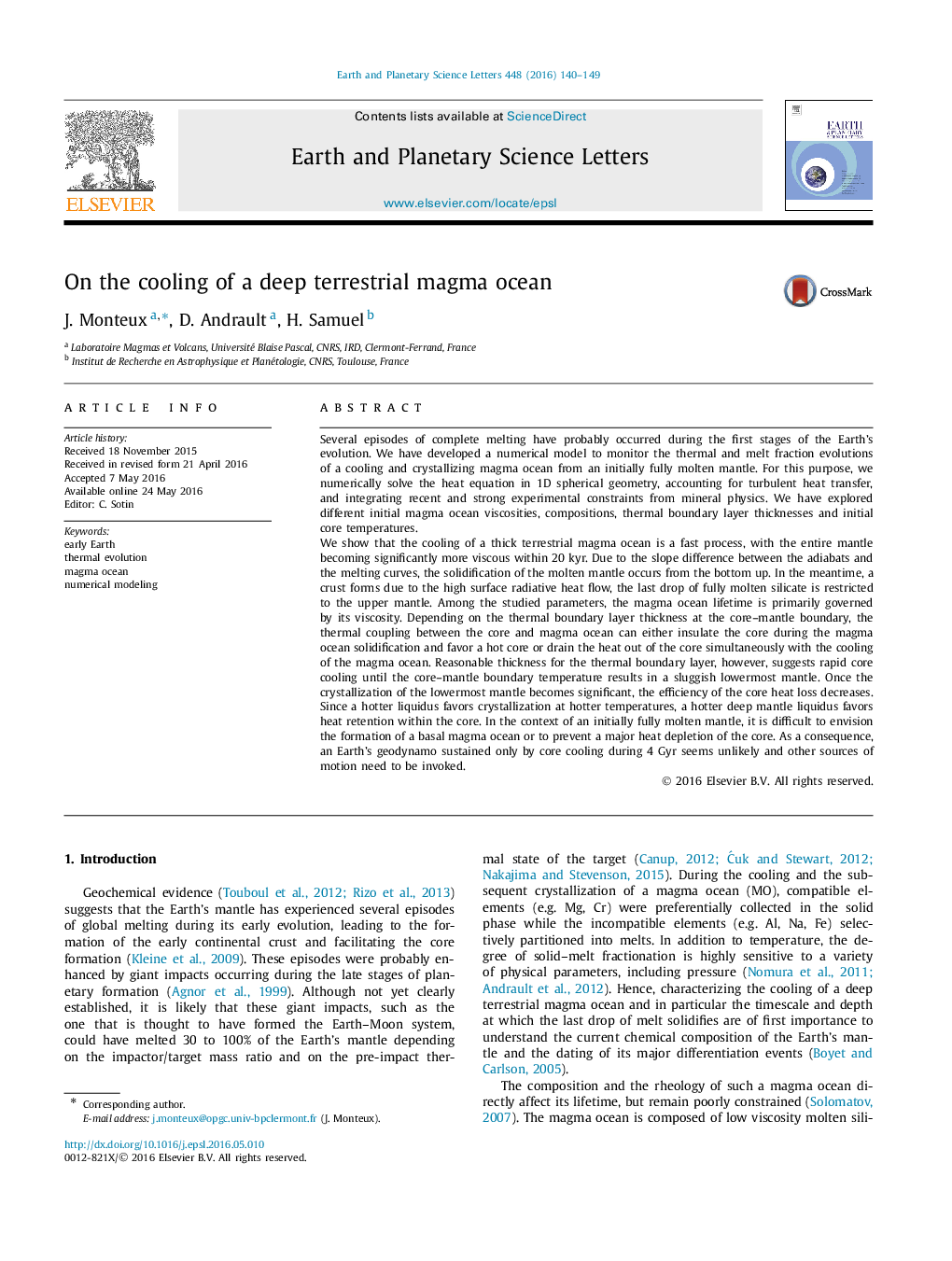| کد مقاله | کد نشریه | سال انتشار | مقاله انگلیسی | نسخه تمام متن |
|---|---|---|---|---|
| 4676925 | 1634708 | 2016 | 10 صفحه PDF | دانلود رایگان |
• We monitor the thermal and melt fraction evolutions of a cooling magma ocean.
• We integrate recent and strong experimental constraints from mineral physics.
• The solidification of the molten mantle occurs from the bottom up.
• The magma ocean lifetime is primarily governed by its viscosity.
• Reasonable thickness for the bottom TBL suggests major heat depletion of the core.
Several episodes of complete melting have probably occurred during the first stages of the Earth's evolution. We have developed a numerical model to monitor the thermal and melt fraction evolutions of a cooling and crystallizing magma ocean from an initially fully molten mantle. For this purpose, we numerically solve the heat equation in 1D spherical geometry, accounting for turbulent heat transfer, and integrating recent and strong experimental constraints from mineral physics. We have explored different initial magma ocean viscosities, compositions, thermal boundary layer thicknesses and initial core temperatures.We show that the cooling of a thick terrestrial magma ocean is a fast process, with the entire mantle becoming significantly more viscous within 20 kyr. Due to the slope difference between the adiabats and the melting curves, the solidification of the molten mantle occurs from the bottom up. In the meantime, a crust forms due to the high surface radiative heat flow, the last drop of fully molten silicate is restricted to the upper mantle. Among the studied parameters, the magma ocean lifetime is primarily governed by its viscosity. Depending on the thermal boundary layer thickness at the core–mantle boundary, the thermal coupling between the core and magma ocean can either insulate the core during the magma ocean solidification and favor a hot core or drain the heat out of the core simultaneously with the cooling of the magma ocean. Reasonable thickness for the thermal boundary layer, however, suggests rapid core cooling until the core–mantle boundary temperature results in a sluggish lowermost mantle. Once the crystallization of the lowermost mantle becomes significant, the efficiency of the core heat loss decreases. Since a hotter liquidus favors crystallization at hotter temperatures, a hotter deep mantle liquidus favors heat retention within the core. In the context of an initially fully molten mantle, it is difficult to envision the formation of a basal magma ocean or to prevent a major heat depletion of the core. As a consequence, an Earth's geodynamo sustained only by core cooling during 4 Gyr seems unlikely and other sources of motion need to be invoked.
Journal: Earth and Planetary Science Letters - Volume 448, 15 August 2016, Pages 140–149
